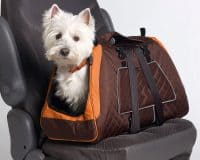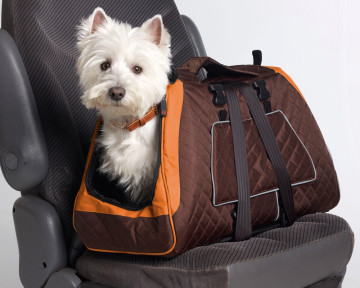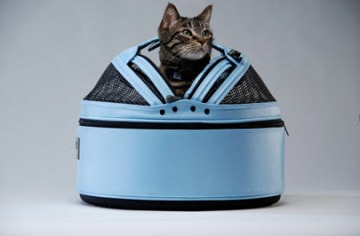How to Transport Your Pets Safely and Legally
Between your own auto insurance, seatbelts, airbags, and emerging collision avoidance technologies, there are plenty of safety features for you and your passengers while on the road – but what about your dogs? Putting your dog in a safety device like a harness or carrier can protect them in a collision, but it’s important to choose carefully.
Few pet safety products have been tested, and even fewer have passed the Center for Pet Safety’s testing, but the few safety measures that passed are truly effective. Which products should you be using? The Center for Pet Safety is trying to find a definitive answer, and they’ve gotten pretty close.
Harnesses
Harnesses are simple straps meant to hold your dog to the seat, and many of them are actually a danger to you and your pets. Of the four harnesses tested in 2011, when the Center for Pet Safety began pioneering pet crash-safety testing, only one passed the first stage of testing. In 2013, with the help of Subaru, the second round of tests took place, showing much more promise.
Of the nine products tested in the dynamic sled crash phase, only one managed to restrain the test dummy. The ISOFIX-Latch in tandem with the carrier-like Jet Set Forma Frame was able to pass rigorous testing with flying colors, but this might not be your only option.
A good car insurance policy can protect more than just your car. Call or click today for more information!
Cages, Crates, and Boxes
Of course, harnesses aren’t the only option when it comes to keeping your pet safe, and many pet owners have already started using crates, cages, and other box-like containers.
Any cage or crate that collapses should definitely send up a red flag for any pet owners – if the carrier is made to be easily taken apart or folded up, it likely can’t take an automotive collision. Soft-sided containers suffer from a similar problem, but can be effective under the right circumstances.
The Sleepypod may be a little on the expensive side, but it’s the only standalone carrier to pass the CPA’s rigorous tests. If you’re transporting a larger animal, this might not be a good fit, but since it’s small and enclosed, it’s perfect for cats as well.
What is the Safest Solution for My Pet?
The science of pet-safety testing is in its earliest phases of development, and with no organizations collecting data on pet accident injuries and fatalities, progress is slow. The CPS remains the only non-profit working towards a better understanding of protecting your pets in a collision, and so far, only the two products we mentioned at the end of the last paragraph have earned their prestigious Top Performer certification. If you’re looking for the best way to protect your dog, these two products might be a good place to begin your research.
Have anything to add? Did we leave out your favorite pet safety product? Let us know in the comments section below, and don’t forget to contact Cost-U-Less Direct today for more information on protecting you, your car, your family, your pets, and more. Looking for a free car insurance quote, renter’s insurance, or consultation? We do that too. Just call or click today to get started and see how much you can save.





